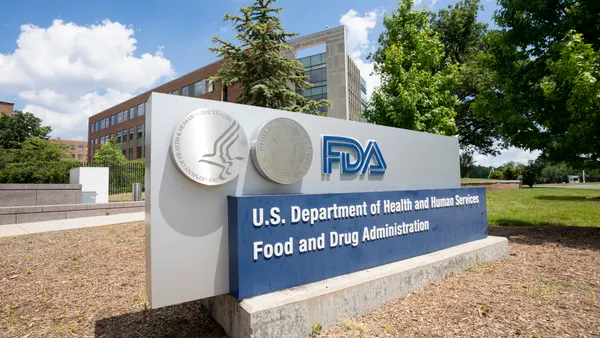Dive Brief:
- The Food and Drug Administration plans to work more closely and flexibly with developers of drugs for certain ultra-rare conditions, outlining Wednesday a new process to coordinate its assessment of such medicines across the agency’s two principal review offices.
- The Center for Drug Evaluation and Research will work together with the Center for Biologics Evaluation and Research to jointly oversee the new process, which the FDA is calling Rare Disease Evidence Principles, or RDEP.
- Under RDEP, the FDA plans to accept evidence generated by single-arm clinical trials, along with supportive evidence from other sources like case reports and natural history studies, as sufficient for meeting its threshold for “substantial evidence of effectiveness.”
Dive Insight:
The RDEP program follows Commissioner Marty Makary’s promises to expedite the development and review of rare disease medicines. But it also builds on years of work at the FDA that predate Makary, including 2023 guidance laying out how the agency expects companies to demonstrate sufficient supportive evidence with one primary clinical trial.
Peter Marks, who led CBER until his ouster this spring, had also pushed the agency to establish more flexible standards for cell and gene therapies that treat rare diseases.
“Drug developers — and the patients they hope to treat — deserve clear, consistent information from the FDA,” Makary said in a statement. “These principles ensure that FDA and sponsors are aligned on a flexible, common-sense approach within our existing authorities, and that we incorporate confirmatory evidence to give sponsors a clear, rigorous path to bring safe and effective treatments to those who need them most.”
The program comes with narrow criteria, however. Prospective applicants to it must aim to treat a disease that’s driven by a known genetic defect and affects fewer than 1,000 people in the U.S. The target condition must also lead to progressive deterioration in an individual’s functioning that causes significant disability or death within a short period. For a treatment to be eligible, there must be “no adequate alternative therapies” that change the disease’s trajectory.
For those drugs that meet the criteria, the agency will consider one adequate and well-controlled study as sufficient for approval, provided it’s supported by “strong confirmatory evidence of the drug’s treatment effect,” by way of data from non-clinical models, pharmacodynamic studies, case reports, expanded access or natural history studies.
“What the RDEP offers is the assurance that drug review will encompass additional supportive data in the review,” the agency wrote on a webpage detailing the program.
Drugmakers seeking to apply must do so before they begin the main study they expect will support their approval submission.
Applications will be reviewed by CBER and CDER teams, who will consult with a coordinating Rare Disease Policy and Portfolio Council.
Once accepted, drugmakers will meet with the FDA to discuss study designs and needed supporting evidence. The process could also include patient listening sessions “when appropriate.”
“While we are encouraged that the FDA is continuing to exhibit flexibility in evaluating gene therapies for rare diseases, it remains unclear what tangible impact the framework will have on the development process and approval timeline,” wrote Sami Corwin, an analyst at William Blair, in a Wednesday client note.
Corwin noted how companies like Neurogene, Rocket Pharmaceuticals, Ultragenyx and UniQure already plan to use single-arm studies to support approval applications for gene therapies they’re developing.
“In addition, given the restrictions on patient size for the program, most therapies in development won't be eligible to apply,” she added.
Writing in a separate note, Jefferies analyst Andrew Tsai said that, even with the patient size restriction, the new program “should bode well” for rare disease drug developers.
Tsai speculated that a few drugmakers might be “emboldened” by the program to explore smaller indications that have clear disease mechanisms.













